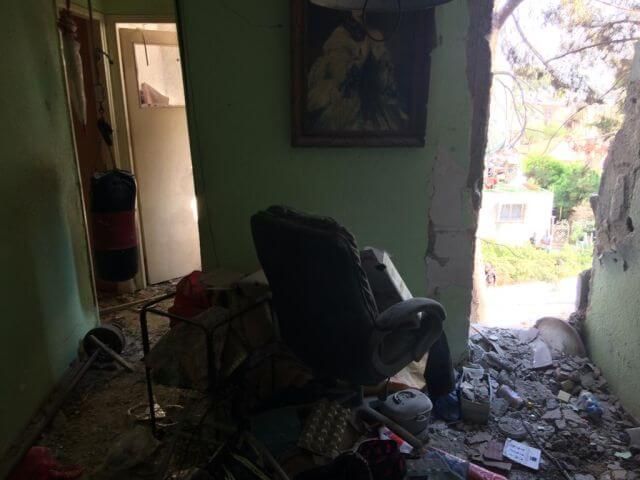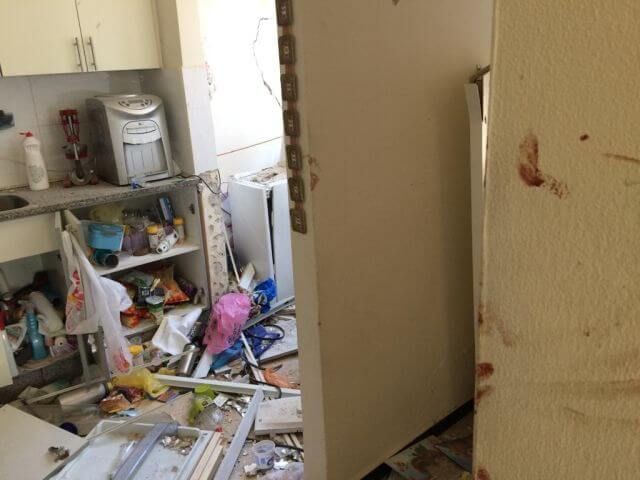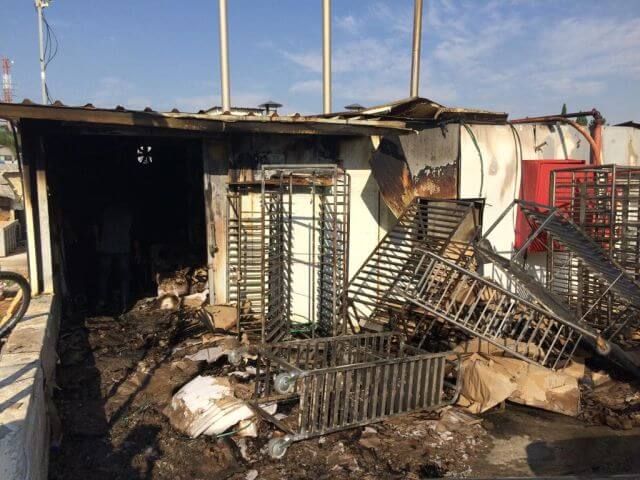The sound of crunching underfoot made me wince. Amidst the debris lay the belongings of the residents of a four story apartment block in the Israeli coastal city of Ashkelon.
Broken glass, children’s toys, a bottle of red nail polish, even a bicycle, all strewn across the floor, daylight streaming in through a huge hole in the wall looking out on to the street below. I felt like I was desecrating the property of the families who had evacuated the building following a direct hit from a Palestinian rocket.

I was here to see the situation for myself joining the throngs of journalists, both Israeli and foreign, climbing the stairs of the bombed out apartment block, peering through open doors, documenting the destruction.
Death and destruction in Ashkelon
This particular neighborhood in Ashkelon was one of the poorer parts of the city. The building, even before the rocket strike, was old and run down, a product of the 1950s when Israel had to mass produce residential concrete blocks to house the thousands of new immigrants entering the country. While all new Israeli residences have a reinforced security room by law, this and other surrounding buildings did not have any. A public bomb shelter outside doubled as a synagogue.

Thirty seconds.
That’s all you have to take cover upon hearing the siren warning of an impending rocket attack. Having had to grab two sleeping children and run downstairs to my own safe room in the 2014 Gaza conflict, I tried to imagine doing the same thing with one less minute to spare due to the proximity to Gaza. Then I imagined what would happen if I were older, perhaps unable to run.
Join the fight for Israel’s fair coverage in the news
Thirty seconds.
It clearly wasn’t enough for the residents of this building, several of whom were injured. Among the people milling around in the street outside, there was a palpable sense of anger not only at the terrorists who had sent the rockets but also the Israeli authorities that they believed had failed to ensure their safety.
I continued climbing to the fourth floor apartment where 48-year old Mahmoud Abu Asabeh died, buried under the rubble. Fresh bloodstains could be seen on the wall, either Abu Asabeh’s or the blood of the woman who was seriously injured with him.
I could only feel numb.

Perhaps the Iron Dome has brought some complacency over the years of Palestinian rockets. But here was the proof that not even the most technologically advanced defense system offers 100 percent protection.
Indeed, were it not for Iron Dome and secure rooms, Israeli casualties would be significantly greater. This is something that the media tend to ignore when lopsided casualty figures are used as a moral barometer.
More trauma for Sderot
In Sderot, I heard from Yonatan Yagodovsky, a representative of the Magen David Adom, Israel’s emergency medical organization, who explained how among the injured included people being treated for stress disorders, a problem not only resulting from this latest escalation but a long-term issue affecting residents of the region who have been subjected to the threat of rocket and mortar attacks for such a very long time.
He also explained how all of the MDA resources were fully deployed and on constant standby, some parked outside volunteers’ houses ready to respond any minute to a medical emergency.
While in Sderot, I saw the results of three tonnes of propane gas that had burned for some 15 hours at one of four sites that had been struck. Sderot’s Deputy Mayor Elad Kalimi explained that although Iron Dome had intercepted a rocket, a piece of debris had landed on a bakery, starting a fire and causing extensive damage. Thankfully nobody had been injured but again, this was not for a lack of trying on Hamas’s part.

Kalimi stressed how the people of Sderot had been living under this abnormal situation for 15 years. He said that all of his six children were suffering from stress disorders. “It’s worse than war” he said, describing how children growing up in Sderot went constantly from routine to emergency and back to routine. Even his youngest child had run in fear to the shelter the previous week when she thought that the sound of a rainstorm was incoming rockets.
‘Tzeva Adom’
Many Israelis, particularly in the south, have an app on their cellphones alerting them to incoming rockets. While the barrage continued throughout the day, somehow the group of journalists I accompanied missed the sirens. It was only on the way back, having stopped for food at restaurant next to Kibbutz Yad Mordechai that I got to briefly experience what thousands of Israelis have endured.
Three faint thuds in the sky indicated the firing of the nearest Iron Dome followed almost immediately by the robotic sounding “Tzeva Adom” (Color Red) broadcast that sent everyone racing into the nearest safe zone, which in this case happened to be the bathroom facilities of the restaurant.
Journalists, restaurant staff and patrons all crammed into the small area near the sinks, for many of them an all too regular occurrence. While we ran as fast as possible, there was no sense of panic, only the fatalism that comes with experience. Likewise, having gone through similar situations both on location for HonestReporting and when my own city came under rocket attack in 2014, this didn’t feel as abnormal as it should have.
Too many media are failing to adequately cover the abnormal situation that has become normalized over the years. While the journalists may have visited during a dramatic escalation, the reality is that when this latest violence has subsided, so will the coverage. The residents of Israel’s south will be but a footnote for the journalists along with the context that goes missing whenever Israel is forced to contend with Hamas terrorism against its civilian population.


